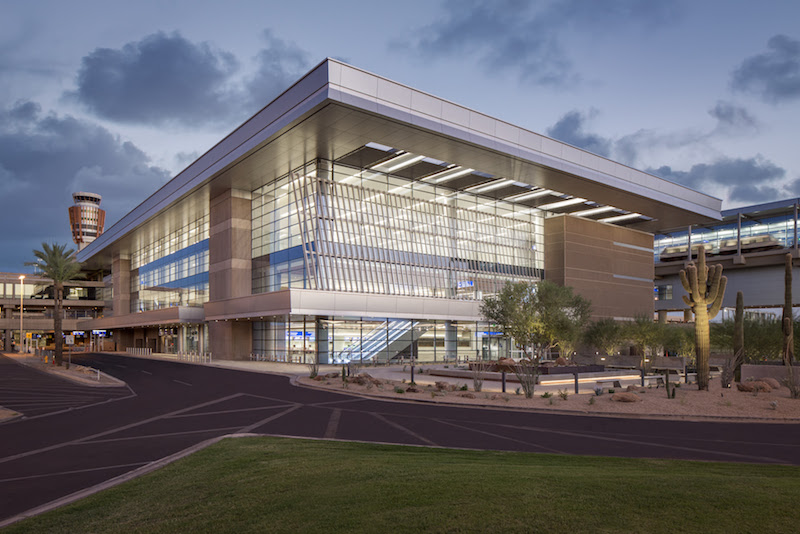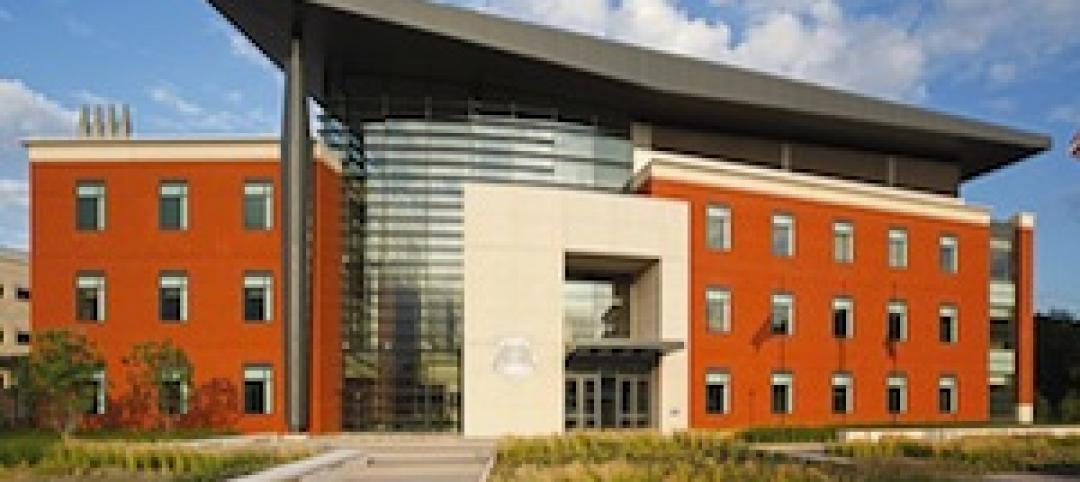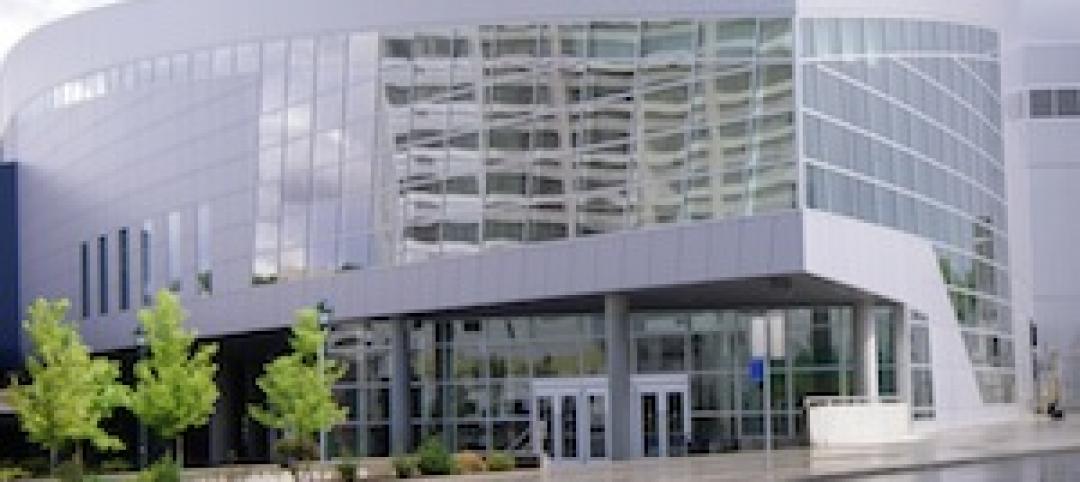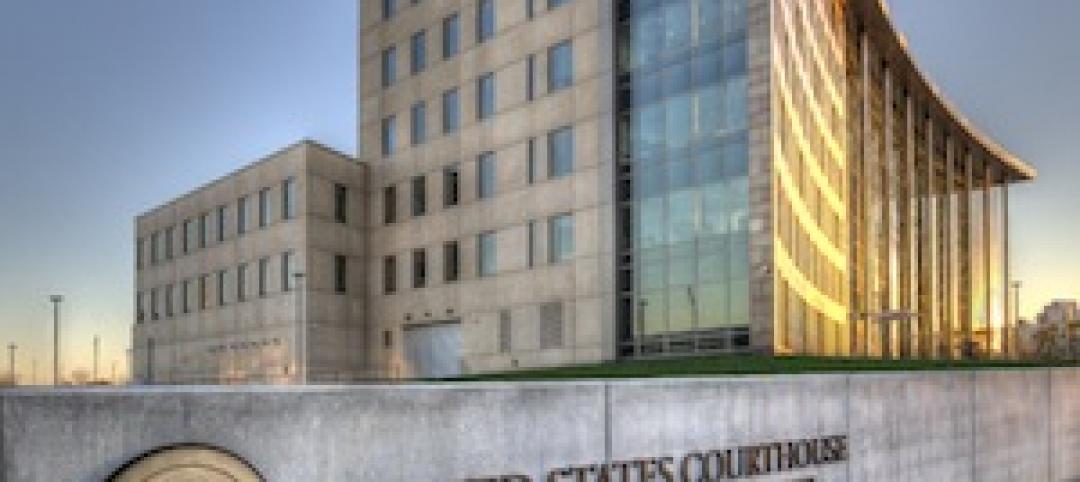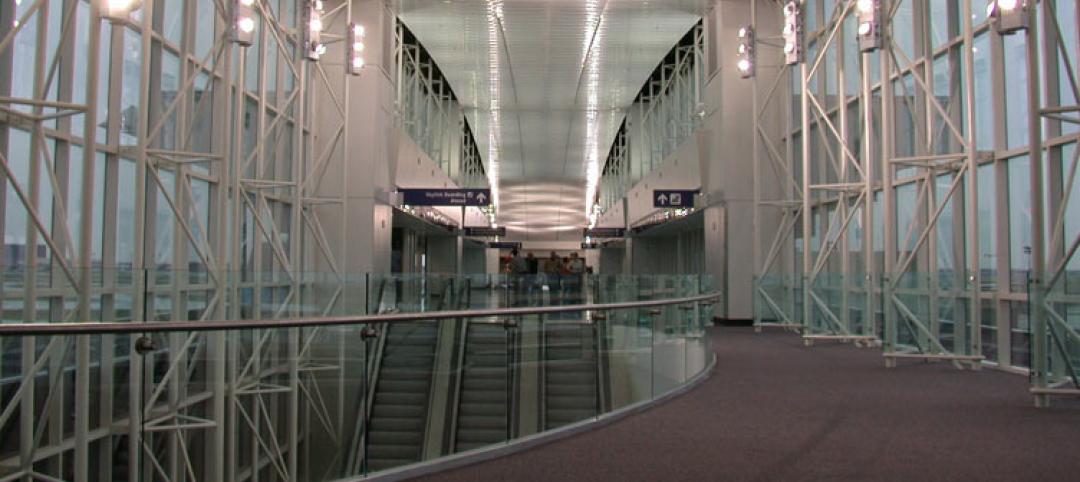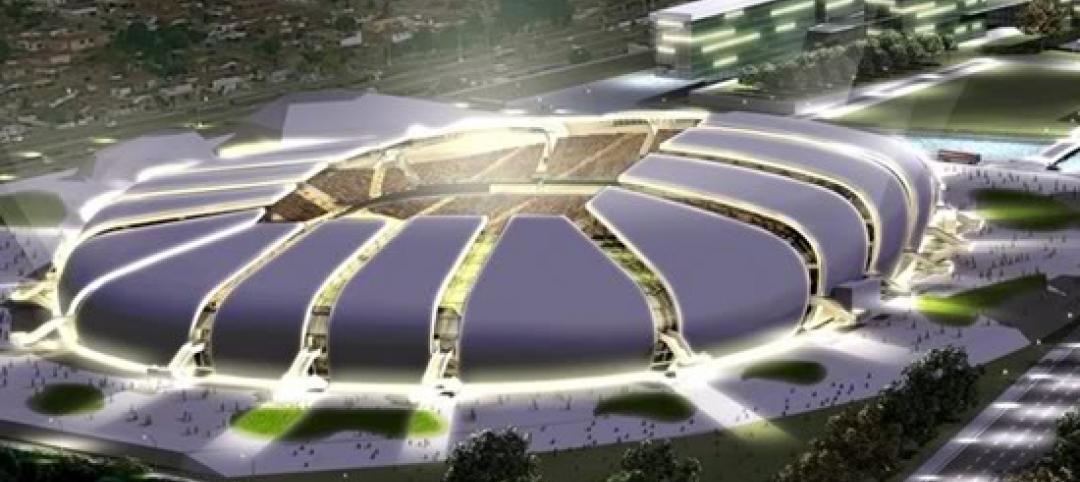The first of a three-part phased modernization of Terminal 3 at Phoenix Sky Harbor International Airport today opened its doors to the public.
The design-build team is comprised of DWL Architects + Planners, SmithGroupJJR and Corgan, along with contractor joint-venture HuntAustin.
With the modernization project, Arizona’s main transportation hub, Phoenix Sky Harbor International Airport, will become the crown jewel among the Sonoran landscape. Unlike many airports, Phoenix Sky Harbor is uniquely located in the bustling City of Phoenix. It serves more than 40 million passengers every year, and has become a destination for travelers across the world.
Capital Improvement Plan
The City of Phoenix’s Capital Improvement Plan for 2015-2020 was the vision to bring Phoenix Sky Harbor International Airport and surrounding areas into a unified campus. It determined a half billion-dollar modernization to Terminal 3 was needed to accommodate increased passenger flow while also creating a world-class travel experience.
Three Component Modernization
The project has three components comprised of renovating the processor building and north concourse, as well as demolishing and building a new south concourse. This, in turn, supports the vision of a multi-modal campus incorporating the PHX Sky Train® and the City’s Light Rail System. The project is being completed in phases to minimize impact to travelers.
The biggest challenge during the initial phase of the modernization program was creating a new and open experience from the original closed-in and internally oriented concrete building. To accommodate the world-class views and provide an open, daylight filled space, the design team manipulated the existing structure by removing large sections of the mezzanine and the pre-cast façade.
“We took what was a very inwardly focused building and made it externally focused, celebrating the beautiful Sonoran Desert landscape,” saysMark Roddy, FAIA, LEED AP BD+C, design director, SmithGroupJJR.The structure of the Terminal 3 building remains intact, while a striking, new glass façade now fronts.
The Journey
The arrival experience on the north curb immerses visitors into the Sonoran desert flora with unique vegetation forms. The glass façade on the west encapsulates a cutting-edge, industry-leading facility. The large overhanging pavilion roof, representative of a porch, and west shading is carefully calibrated to reduce glare and heat gain, while maintaining views of the city and landscape.
The recomposure atrium provides a unique place for passengers to gather and explore the views of the airfield and the Phoenix Mountains Preserve after passing through security.
Located between the north and south concourses, the Great Hall transforms the current passenger hall with higher volumes, views, and natural light, while providing a centralized passenger amenities area.
A Museum Gallery has also been added to the terminal. In future phases of the project, new shops and restaurants will open, giving travelers a chance to continue their Arizona experience even after passing through the security checkpoint.
At the fourth and top level, skylights offer clear views of the sky and the combination of the glass angle and the gradient opacity of the glass eliminate glare. The result is a space naturally illuminated and connected to the environment.
Materiality Wayfinding
Given the need to create a space to accommodate the vast array of diverse commuters, careful consideration was given to the use of materials to help guide an efficient passenger flow. Wood panels, acoustic metal ceiling panels and the use of six shades of terrazzo flooring provide a natural flow with intuitive wayfinding. Atriums at both the departures and arrivals areas provide transparency, so one can see where they are headed whether through the facility or outdoors.
Modernization to Continue
Following the completion of the initial stage will be Phase 2 of the modernization program. Targeted for completion in late 2018/early 2019, it will create a new 15-gate south concourse. New amenities such as food and retail concessions will be added. Finally, Phase 3, to be completed in 2020, will involve the demolition and construction of a new north concourse focused on terminal passenger flow reconfiguration and concessions enhancement.
Related Stories
| Aug 30, 2013
Local Government Report [2013 Giants 300 Report]
Building Design+Construction's rankings of the nation's largest local government design and construction firms, as reported in the 2013 Giants 300 Report.
| Aug 30, 2013
State Government Report [2013 Giants 300 Report]
Stantec, Jacobs, PCL Construction among nation's top state government design and construction firms, according to BD+C's 2013 Giants 300 Report.
| Aug 28, 2013
Federal Government Report [2013 Giants 300 Report]
Building Design+Construction's rankings of the nation's largest federal government design and construction firms, as reported in the 2013 Giants 300 Report.
| Aug 26, 2013
What you missed last week: Architecture billings up again; record year for hotel renovations; nation's most expensive real estate markets
BD+C's roundup of the top construction market news for the week of August 18 includes the latest architecture billings index from AIA and a BOMA study on the nation's most and least expensive commercial real estate markets.
| Aug 22, 2013
Energy-efficient glazing technology [AIA Course]
This course discuses the latest technological advances in glazing, which make possible ever more efficient enclosures with ever greater glazed area.
| Aug 21, 2013
Why research is the ticket to successful airport wayfinding
Wayfinding is more than just signs; it requires a holistic approach based on communicating information that helps people make the right decision at the right time.
| Aug 19, 2013
Discovery of hidden asbestos complicates DFW terminal renovations
The finding of more asbestos in Terminal B than expected, and the pending merger of US Airways and the airport’s largest tenant, American Airlines, is causing construction delays on a $2.3 billion Dallas/Fort Worth Airport terminal renovation.
| Aug 19, 2013
Integration of solar panels in building skin seen as key net-zero element
Recent high-profile projects, including stadiums in Brazil for the upcoming World Cup and Summer Olympics and a bank headquarters in the U.K., reflect an effort by designers to adopt building-integrated photovoltaics, or BIPV.
| Aug 14, 2013
Green Building Report [2013 Giants 300 Report]
Building Design+Construction's rankings of the nation's largest green design and construction firms.
| Jul 29, 2013
2013 Giants 300 Report
The editors of Building Design+Construction magazine present the findings of the annual Giants 300 Report, which ranks the leading firms in the AEC industry.


